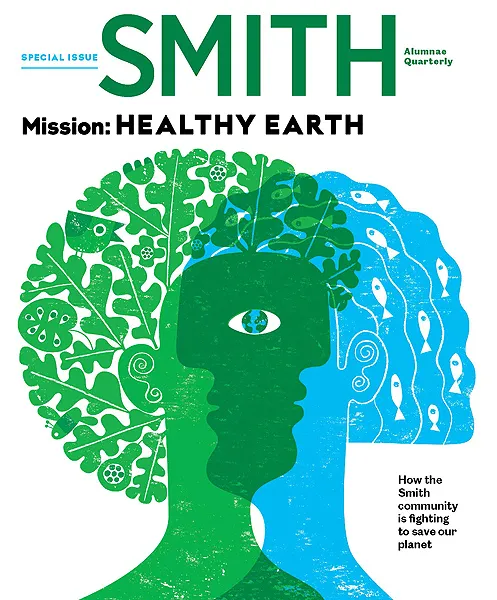Tackling Grand Challenges in the Classroom
Research & Inquiry
Published March 25, 2020
In Assistant Professor Niveen Ismail’s engineering classes, climate change may not be a formal part of the syllabus, but the effects of a changing climate form a backdrop to everything her students take on. “Our behaviors, the way we analyze systems, the technologies we think about are going to affect the climate in the future,” Ismail said. “That’s an important message, just showing that [students’] education and skill set can be applied to help their own generation.”
Last fall, Ismail taught a course in which students considered how they might address some of the interlinking “grand challenges” that environmental engineers confront. The topic has its roots in Ismail’s own experience. She began her career in the petrochemical industry but then began to consider a different path, one that might lead to addressing the global problem of water scarcity. She went back to graduate school and earned a doctorate in environmental engineering, with a specialty in water—its quality, availability, contaminants and management methods.
In Ismail’s class addressing grand challenges, students researched and developed a solutions-oriented National Science Foundation–style grant proposal based on a climate topic of their choice. “I laid the groundwork of showing them that just about any environmental topic can be related to climate change,” Ismail said.
When it comes to solving climate problems, students find there are no easy fixes.
Things got interesting when students began considering the trade-offs inherent in any solution they found, especially as they considered competing stakeholders. One student, for instance, discovered that forms of solar energy can have negative implications for agricultural land use. Another student encountered environmental justice issues as she explored the use of geothermal energy in Turkey and its effect on the farming community.
“Each person got to understand their topic very well, whether it was about water reuse or hydraulic fracturing, solar energy, coal ash or no-till farming,” Ismail said. “I enjoyed seeing them narrow down their topic and understand they can’t tackle every side of the problem.”
In fact, the trade-offs and pitfalls inherent in even the most idealistic solutions could have led to a sense of hopelessness, she noted.
“The reality is there is no perfect solution. So we have to weigh cost and benefits, and life-cycle assessments of different technologies,” she said. “Then we’d say, well, that’s their job as the next generation. They are going to have a voice in thinking about new solutions that are innovative and also address environmental issues.”
This story appears in the Spring 2020 issue of the Smith Alumnae Quarterly.
SMITH ALUMNAE QUARTERLY
Special Climate Issue

Mission: HEALTHY EARTH
How the Smith community is fighting to save our planet
Students in Niveen Ismail’s engineering classes learn about the complexities of environmental problems.